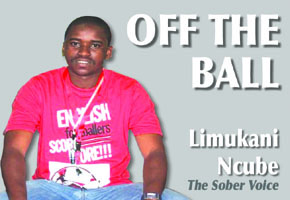Let’s give attention to all sporting disciplines
For many years South Africa ruled supreme in that sports discipline, standing astride like a colossus over the continental rugby arena while Zimbabwe and other African nations “peeped through its huge legs like dishonourable graves”, to borrow a Shakespearean phrase.
Zimbabwe performed brilliantly off and on in the soccer field and in swimming. In the latter, the inimitable Kirsty Coventry has literally ruled the competitive international swimming pools, raising the Zimbabwean flag high for many a year.
Another sport of great interest is cricket in which Zimbabwe has been featuring with relative success. In tennis, the country’s absence is dismal.
This brings us to the actual purpose of this opinion article: the need for the nation to give much time and attention to various types of sports instead of soccer, track and field events.
A country with as large a population as Zimbabwe’s 13 to 14 million and with a national economy worth $10 billion is certainly able to support more than 10 or so types of sports.
What is required is organisational skill and thorough planning. These should be provided and done by the appropriate ministry, the Ministry of Education, Sport, Arts and Culture.
Sports, and I am referring to various kinds, should be nurtured in first and foremost every primary school. The best way to do so is to train personnel specialising in sports at all colleges of education.
These colleges currently train teachers whose major focus is on academic subjects with very little on sports. Each college should be required to have a quota system to produce sports instructors, and the syllabi should be so tailored that some instructors would be for children aged between seven and 14 years, that is to say those in primary schools, especially in the rural areas.
Other instructors would be for secondary school pupils and so on. In the 1950s and 1960s, Umtali Teacher Training College under the principalship of a Mr Drury ran a somewhat similar course.
It included music, physical training and the English language among its subjects. This article’s author is unaware of how it ended with the passage of time.
In addition to the training of sports instructors, the colleges could supplement the formally enrolled numbers by regularly running intensive short courses, for teachers already in the field. They could qualify after completing an officially recognised syllabus and the training could be run during school holidays.
Sports covered by such a scheme would include tennis, cricket, rugby, swimming, basketball and boxing. Opinion is bound to differ on this particular aspect of this matter, that is the type of sports to be given priority.
But that is neither here nor there. What is important is to run such a project, leaving the subjects and the syllabic content to the government ministry concerned. It has the experts.
What we should bear in mind is that sports, culture and arts can be veritable sources of livelihood if they are treated professionally.
From 1924 up to this year, most of the athletes taking part in Olympic Games were and are still from Europe, America, Canada, Asia, Australia but certainly not from the African continent. African countries that have meaningfully featured are Ethiopia, Morocco, Algeria and recently South Africa.
We sent the first black person to represent the country — then called Southern Rhodesia to the Olympic Games in 1960. He went to the games held in Rome and his name was Cyprian Tseriwa, a middle distance runner. He was from Mashonaland East.
He did not win any medal. On his return he was snapped up by Wankie Colliery as a sports instructor, causing him to quit his teaching post at Marondera.
Tseriwa was a self-made athlete who excelled throughout the country against massive odds for him to be selected for the Olympic squad. He joined the Colliery in 1961 and groomed an athletics track sport team that included a former student of Tokwana School, Fanake “Mazowe” Ndlovu.
His team competed in the famous Chamber of Mines league where it put many of its rivals in the shade, including South African groups. Tseriwa was a source of pride for all black people of this country at a time when they were racially despised and trodden underfoot by the laws and socio-economic practices of the white government of the land.
Now that the black people are masters and mistresses of their own lives, all round, they should produce hundreds of Tseriwas in each of Zimbabwe’s 10 provinces.
How? By constructing sports academies in every province eventually, and training sports teams in a variety of disciplines with the aim of participating fully in all Olympic events.
If the Wankie Colliery of the early 1960s could maintain a well manned sports department in those years, and so could Mhangura Mine, Cam and Motor Mine and others, surely the state of Zimbabwe can do much better than that with revenue from just about 50 different types of minerals in this day and age.
l Saul Gwakuba Ndlovu is a Bulawayo-based retired journalist. He can be contacted on cell 0734328136 or email [email protected].












Comments